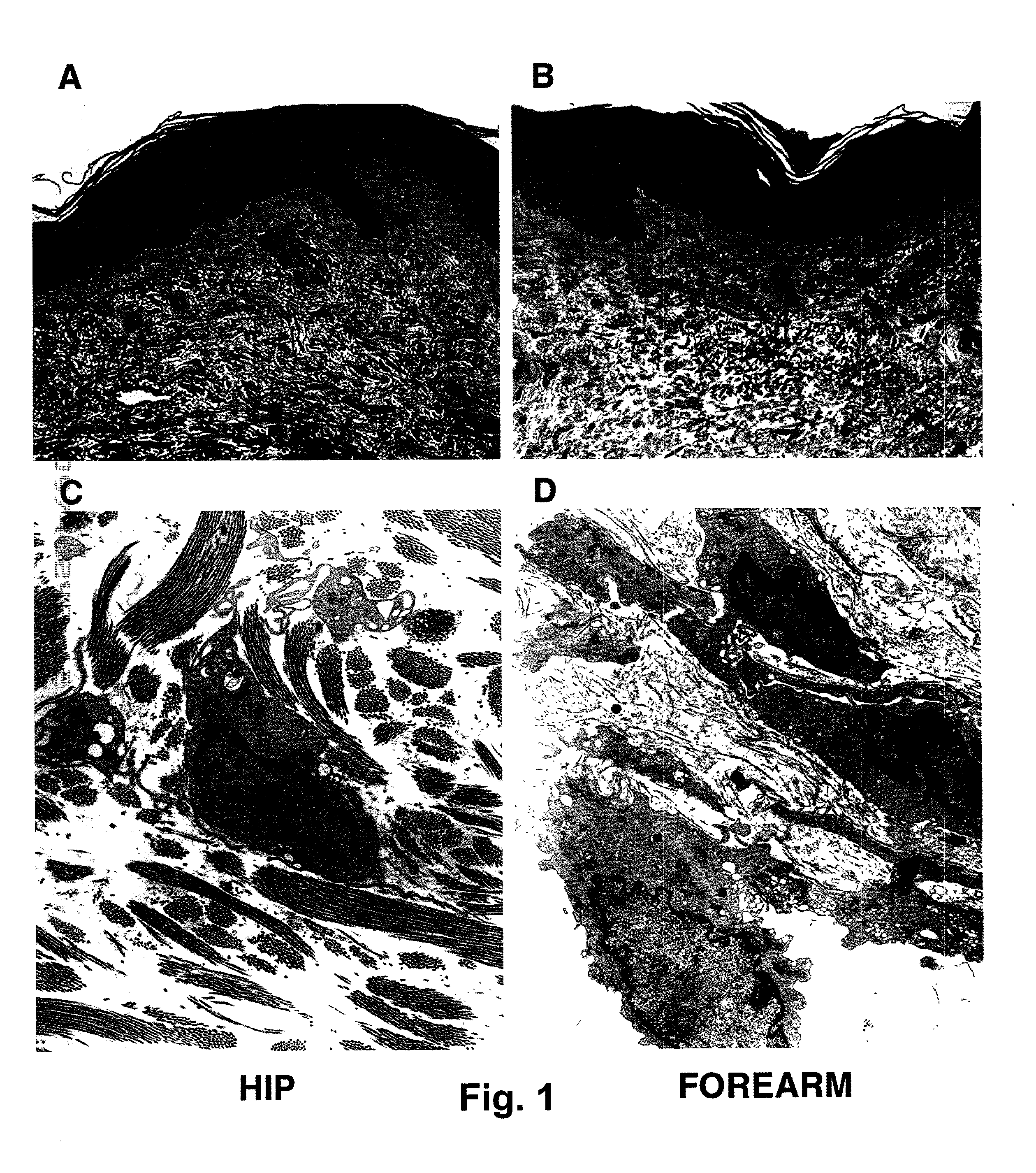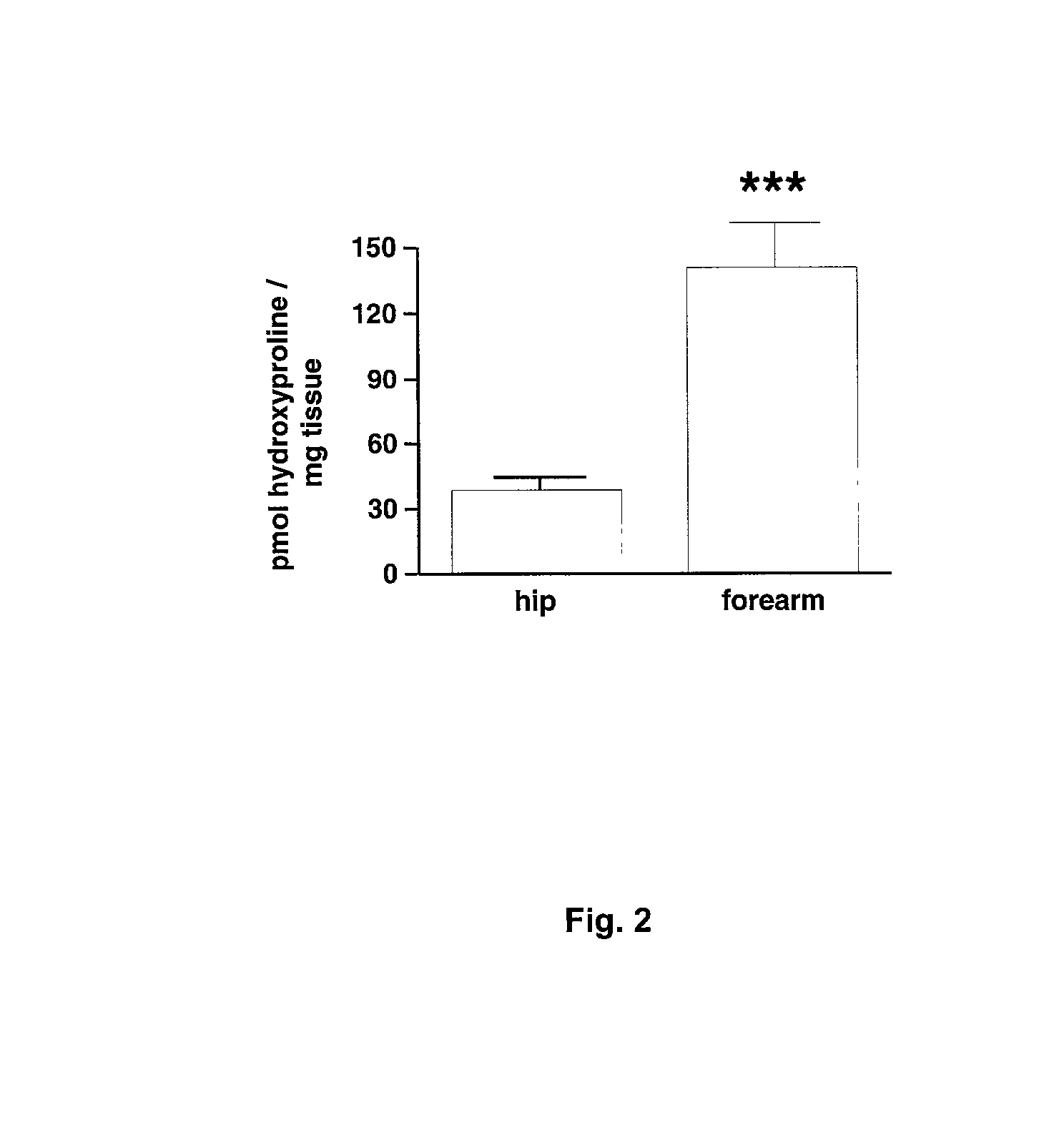Method for protecting and restoring skin using selective MMP inhibitors
a technology of mmp inhibitors and skin, applied in the direction of dermatological disorders, drug compositions, pharmaceutical delivery mechanisms, etc., can solve the problems of constant repeating of the degradation and repair process, difficult quantification of damage, and observed damage to the collagenous matrix of the dermis, so as to reduce the type i procollagen synthesis
- Summary
- Abstract
- Description
- Claims
- Application Information
AI Technical Summary
Benefits of technology
Problems solved by technology
Method used
Image
Examples
Embodiment Construction
[0029] In both photodamaged and naturally-aged skin, the collagenous matrix of the dermis is degraded. The changes shown in FIGS. 1A-1D and FIG. 2 are believed to underlie the clinical deficits seen in naturally-aged and photodamaged skin. For example, this damage to the collagenous matrix is thought to underlie the coarse, rough, wrinkled appearance of photoaged skin. How collagen damage is brought about during photoaging is not fully understood. Exposure of skin to UV irradiation transiently up-regulates production of MMPs that degrade skin collagen, as observed by Fisher GJ et al., "The molecular basis of sun-induced premature skin ageing and retinoid antagonism," Nature (London) 1966: 379:335-338; Fisher GJ et al., "Pathophysiology of premature skin aging induced by ultraviolet light," New Eng. J. Med. 1977: 337:1419-1428. Repeated MMP induction over years or decades likely gives rise to the damage seen in the matrix of chronically sun-exposed skin.
[0030] Damage to the collageno...
PUM
| Property | Measurement | Unit |
|---|---|---|
| Time | aaaaa | aaaaa |
| Time | aaaaa | aaaaa |
| Exposure limit | aaaaa | aaaaa |
Abstract
Description
Claims
Application Information
 Login to View More
Login to View More - R&D
- Intellectual Property
- Life Sciences
- Materials
- Tech Scout
- Unparalleled Data Quality
- Higher Quality Content
- 60% Fewer Hallucinations
Browse by: Latest US Patents, China's latest patents, Technical Efficacy Thesaurus, Application Domain, Technology Topic, Popular Technical Reports.
© 2025 PatSnap. All rights reserved.Legal|Privacy policy|Modern Slavery Act Transparency Statement|Sitemap|About US| Contact US: help@patsnap.com



